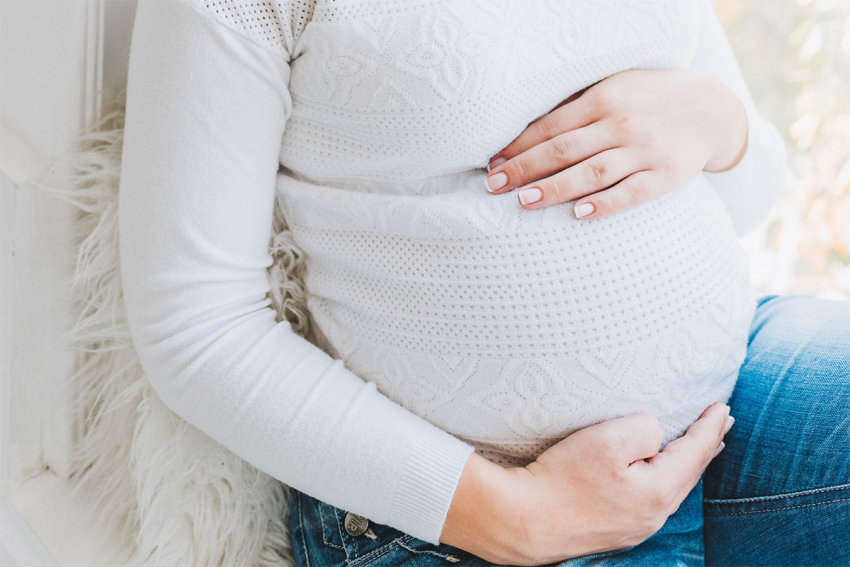Higher share of unintended pregnancies are aborted in blue states than red, data suggests

A scholar at the Catholic University of America reports that data released in a recent report from the pro-abortion Guttmacher Institute has found that the share of unintended pregnancies carried to term is much higher in red states than blue states.
Dr. Michael New, a Catholic University research associate in Washington, D.C., and an associate scholar at the pro-life research nonprofit Charlotte Lozier Institute, published an op-ed in National Review Wednesday titled "New Guttmacher Report Downplays Pro-Life Progress."
New analyzed data collected by the Guttmacher Institute in a report released earlier this month that details the estimated number of unintended pregnancies in each U.S. state and the share of unintended pregnancies that ended in birth, abortion and fetal loss in 2017.
"In the 15 states that voted for the Democratic presidential nominee in the past six elections, approximately 45 percent of unintended pregnancies resulted in an abortion," New wrote. "In the 20 states that voted for the Republican presidential nominee in the past six elections, meanwhile, only about 23 percent of women with unintended pregnancies had an abortion."
In an interview with The Christian Post, New told CP that based on the data provided in the report, he "was able … to do an average comparing the Democratic states to the Republican states."
"The ideology of the states doesn't seem to have a strong impact on the unintended pregnancy rate," he said. "The reason why we see lower abortion rates in conservative states is that when unintended pregnancies do happen, women are a lot more likely to carry those pregnancies to term."
New attributed the lower share of pregnancies ending in abortion in red states to "certain kinds of pro-life laws" in effect, including "informed consent laws and parental involvement laws."
Additionally, he noted that "there are no situations really where a state Medicaid program pays for … abortions" in red states. By contrast, he said that the Medicaid program does cover abortion in a lot of Democratic and liberal states.
"That does make a difference," he said.
"I don't think it's just legislation," he added. "Right-of-center states do have more pregnancy help centers. They're also more likely to make pregnancy help centers available for different kinds of government grants. I think that makes a difference, and I just think also public sentiment plays a role as well."
New predicted that the divide in the rate of unintended pregnancies ending in abortion between the blue states and the red states will grow even larger in the future.
"I think … you're going to see in red states a higher percentage being carried to term and a lower percentage being aborted, and that's just because you see … red states having … been a lot more active passing pro-life laws," he said.
The pro-life scholar also indicated that depending on the outcome of court challenges surrounding Texas Senate Bill 8 banning abortion as early as six weeks of gestation and Mississippi's 15-week abortion ban, more red states will pass similar laws. He believes that could cause the rate of unintended pregnancies ending in abortion to decrease even further.
"And I also think in liberal, Democratic states, they're tragically repealing a lot of the pro-life laws that are on the books," New said.
New stressed that "Illinois and Maine in the past few years have started covering abortions in their Medicaid program" and "Massachusetts weakened its pro-life parental involvement law a year or so ago." He also said several states have enacted laws allowing late-term abortions, including New York and Rhode Island.
Although New did not examine the share of unintended pregnancies that resulted in abortion in the 15 states that supported presidential nominees from both political parties in at least one of the past six elections, he suggested that "the figures would be in the middle" between 23% and 45%.
Digging into the data even further, New calculated that "44 percent of all unintended pregnancies ended in abortion" nationwide in 2017. Guttmacher did not provide that information on a national level. But New said the report "did provide data for each state" and he was "able to weigh the state by the number of pregnancies so ... the California numbers count more than the ... South Dakota numbers." From there, he obtained the 44% figure.
He assured that research shows a "durable reduction in the percentage of unintended pregnancies that are aborted" over the decades.
During the 1980s and 1990s, New said that "over half of unintended pregnancies were aborted." But he said that figure has dropped into the low 40%-range starting around 2008.
"I think that if more and more unintended pregnancies are being carried to term, it all treads back to the activities of pro-lifers," he added. "We're either changing hearts and minds, helping women in pregnancy centers or passing pro-life laws or moving some combination of those things."
Ryan Foley is a reporter for The Christian Post. He can be reached at: ryan.foley@christianpost.com



























